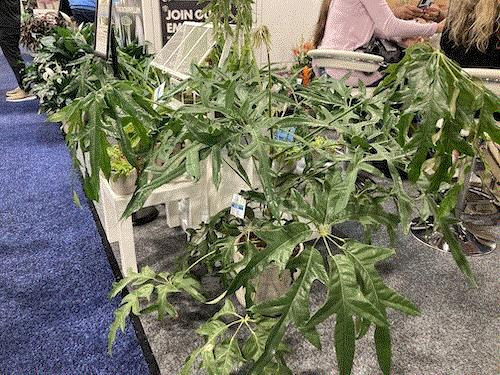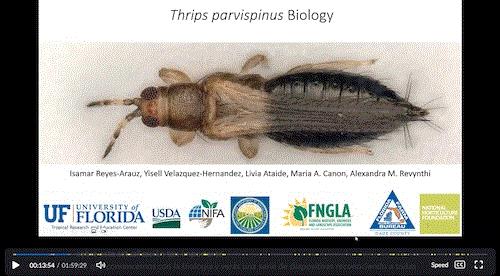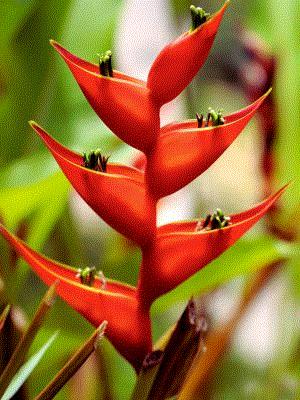In Orchid News …
I heard earlier this month that Color Orchids, with locations in Virginia and Texas, has acquired Floricultura Pacific based in Salinas, California. Floricultura Pacific, which focuses on pre-finished orchids for the North American market, was previously owned by Floricultura Netherlands, one of the world’s largest orchid breeders. If I recall correctly, the last time I attended California Spring Trials (CAST), one of the host sites was at that very same Floricultura operation in Salinas. It was humming with efficiency as only a top-notch grower would.

The acquisition makes Color Orchids the largest supplier of orchids in the U.S. How large? About 25 total acres of production now in three states. The acquisition helps them to expand on the tagline prominently displayed on their homepage: National brand, local supply.
My boss Chris Beytes visited Color Orchids’ Virginia location in 2016 and spoke with CEO and owner Ben Van Wingerden, and he wrote a pretty good article in GrowerTalks about the operation, too—you can find that article HERE. Looks like Chris might have to do a follow-up now.

Cultivation Station: Schefflera Mato
We are back with another edition of Cultivation Station, where you can find quick-and-dirty cultural information about foliage and tropical crops you might want to grow.
This week we’ll look at the Schefflera Mato from ForemostCo. It received a Retailers’ Choice Award at Cultivate’23 when they were calling it Cayman. They’ve renamed it in Mato in honor a colleague, Juan “Mato” Ward who has since passed away.

This specimen shown at TPIE was planted from a cutting week 36 in 2024.
Schefflera Mato received the Retailers’ Choice Award because the judges were blown away by its deeply serrated leaves. Use it indoors or out in large pots and it’ll be a stunning focal plant in either location.
I’m told it is patented in Europe and a patent is pending here in the U.S. One of its best attributes is its quick grow time, especially for growers in the North, because it saves energy and time.
Total Crop Time from Input to Finish: 16 to 18 weeks for a 10-in. pot
Soil/Media: Chunky peat and coir mix
Moisture: Let it dry between watering
pH: 5.5-6.5
EC: 1.2-1.4
Temperature: 65F-90F
Humidity: 50%-70%
Nutrition: Fertilize with a water soluble, well-balanced feed once a week
Light Level: High
Pests: Watch for mites
If you want to check out just how large Mato gets and how fast, watch this Instagram clip with ForemostCo’s Brittany Suarez. The smaller one on the bench is 29 weeks old and that behemoth behind her is 2 years 10 weeks—and that’s after being cut back twice! Amazing!
Schefflera Mato is available from ForemostCo as 18-22-in. air layers. Find out more by visiting their website and reaching out to them from there.

Predatory Mite Research for T. parvispinus
Last time I mentioned Koppert’s Limonica as a predator for Thrips parvispinus. I was turned on to some research happening at the University of Florida that is looking into some other predatory mites. Dr. Alexandra Revynthi is conducting that research, and so far, some mites are looking promising.
Her lab has conducted two sets of laboratory experiments. First, they tried to identify which thrips states the predators prefer. And after that first experiment, they then would feed that stage of the thrips to the predators to see their rate of consumption.
“So far, we have seen potential in Amblyseius swirskii, for sure, which is a confirmation, from the information that we have received from Europe,” Alexandra said. “And then we also show great potential with Iphiseius degenerans, which is another commercially available predatory mind that we can use for Western flowers control. These two, for sure, stood out because they had the highest predation rate. From an oviposition point of view, both predators oviposited significantly higher number of eggs. We also saw that Neoseiulus cucumeris, which is also a famous thrips predator, also laid a lot of eggs when it fed on Thrips parvispinus.”
Before any of this mite predation happens, however, set yourself up for success, Alexandra advised. “They actually need to release the predatory mites very early, before even the pest is inside or when the pest is at very low density and have the predator established with alternative food. All these predators that I mentioned are generalist predators. They can feed on thrips, some of them can feed on spider mites, they can feed on pollen, they can feed on these Artemia eggs, this shrimp cysts that they sell now commercially, so you can release also pollen or these Artemia eggs on the crop as a supplementary food for the predators. The predators stay on the crop and feed on this, and once the primary pests appear, then the predators are already there, ready to prey on them.” Sound both brilliant and diabolical to me.
Alexandra reiterated that these are results from lab experiments at the moment, and not from “in the field” studies. She anticipates that when they start working with true infestations, they will have more accurate results.
One last note from Alexandra: When you release any type of predator, whether that be a mite or an insect, be mindful about your chemical control applications. “Choose softer chemistries that are compatible with the biological control agent,” said advised, “and give enough time for the predators to act before applying chemicals.”
Good words of advice, Dr. Revynthi! Good luck with the in-the-greenhouse experiments and let me know how it turns out so I can help spread the news.

Hungry for more predatory mite and T. parvispinus information? Watch Alexandra’s recent webinar on the topic.

Help for Heliconia
In my late-February edition of Tropical Topics I mentioned that Dümmen Orange’s heliconia breeding program was being transferred to Lucanne B.V. That put the topic of heliconia top of mind for me for a few weeks, during which time I saw this headline from the Smithsonian Magazine: “Nearly Half of the Colorful and Charismatic Heliconia Tropical Plant Species Are Threatened with Extinction, New Study Reveals.”
The article reveals research reported in the journal Plants, People, Planet that nearly half of the 187 species within the Heliconia genus are threatened due to habitat loss, climate change and poaching.

The species that are endangered are in areas where human impact from agriculture, urbanization and roads has degraded the habitats for these plants. The region most impacted is the Andes Mountain range. If human actions are impacting the Heliconia, then their pollinators—hummingbirds—lose a food source and would be threatened, as well. Insects also depend on Heliconia species. It’s all connected, folks.
The researchers studying this issue have developed a plan to protect 45 of the most vulnerable Heliconia species, including those that are underrepresented in gardens. The two-pronged approach includes setting up a protected area in their native habitats—South and Central America and in the Caribbean—and also cultivating them in botanical gardens.
Two of the researchers on this project were to attend the XXII Conference of the Heliconia Society in Hawaii this week to try to get these plants introduced into greenhouses and botanical gardens. I will have to check on the progress made and report back!
If you have any comments, questions or suggestions for content, email me about them at ewells@ballpublishing.com.

Ellen Wells
Senior Editor
Green Profit
This edition of Tropical Topics was sent to 29,143 loyal readers!
If you're interested in advertising on Tropical Topics, contact Kim Brown ASAP!